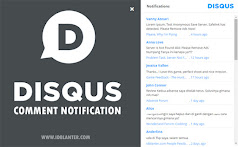Posted by Dr. Taraneh Razavi, M.D., Staff DoctorFrom time to time, a resident physician at Google headquarters weighs in with her thoughts on healthy living. This is not medical advice, and you should check with your own doctor before pursuing any particular course of action. There is a Chinese saying that "To go beyond is as wrong as to fall short." In other words, how long can you tap on that keyboard or sit in that chair before you hurt yourself. We’re not designed to remain as sedentary or perform the fine motor movements for the long uninterrupted hours that we have to do in so many of our jobs. Evidence suggests that prolonged abnormal posture and repetitive movements contribute to neck, limb and back pain. These conditions are collectively known as overuse syndromes, or repetitive stress injury (RSI).

RSI is no small matter. It accounts for 34% of all lost-workday injury and illness — and costs almost $20 billion annually, according to the
Bureau of Labor Statistics.
The National Academy of Sciences has concluded that an estimated $50 billion is lost by businesses every year from sick leave, decreased productivity and medical costs linked to repetitive stress disorders. The Academy has published two
reports since 1998 which directly link repetitive motion to workplace injury.
The damage sustained from RSI is due to structural changes in the muscle fiber as well as due to decreased blood flow. Nerves can also be involved. The immobile tissue and surrounding inflammation compress the nerve which can cause numbness or tingling and eventually weakness if the nerve is damaged severely.
For those of you who need evidence, see this study on
"Overuse Syndrome." In this study, biopsies were taken from hand muscles of injured and normal subjects, which demonstrated the structural damage in the muscle fibers and correlated the damage with the severity of the injury. In
another study, biopsies were taken from neck muscles, and reduced local blood flow was found in the injured areas. The greater the pain difference, the greater the reduction in blood flow.
Some of the most common RSI injuries are
tendonitis and
carpal tunnel syndrome (CTS). Work-related carpal tunnel syndrome now accounts for more than 41% of all repetitive motion disorders in the United States, says
this study. And here's a telling title:
"Hard work never hurt anyone: or did it?" -- it's a review of occupational associations with soft tissue musculoskeletal disorders of the neck and upper limb.
So what should you do? The key to treatment is
prevention. Research shows that injuries decrease and productivity increases when employers encourage stretch breaks and stress the importance of ergonomics. See for example this one at at
Ergonomics Now.
Here are a few
tips:
--
Breaks should be taken every 30-45 minutes for at least 5 minutes. If you need assistance there are
free downloadable timers that will help remind you to do so.
--
Stretch your arms, hands, neck, and back during breaks. This
yoga site demonstrates some exercises. Other sites are listed below.
--
Maintain posture alignment. Don't slouch on the couch with the laptop.
--
Work stations should be reviewed initially and with each office move. Adjust your chair, monitor, keyboard, mouse, laptop. Alternate keyboards and mice periodically.
--
Shift your gaze from the computer screen to the distance. And don't forget to blink!
--
Limit non-essential computer use. This may be heresy -- but do give the surfing, gaming, emailing, and text messaging a rest.
-- If pain occurs or persists,
see your doctor, who may recommend wrist brace, ice packs, anti-inflammatory medication such as ibuprofen, cortisone injections, physical therapy, and most importantly,
rest to allow healing. Don't procrastinate in addressing your symptoms -- the sooner you tend to them, the better off you are.
And finally, here are more sites that may be helpful:
Safe Computing TipsAlternative Pointing DevicesAlternative and Ergonomic KeyboardsHarvard RSI ActionRSI exercisesRSI PageUpdate: One more: Boston U.'s
Ergonomics Self-Help Guide (Flash)






.jpg)

